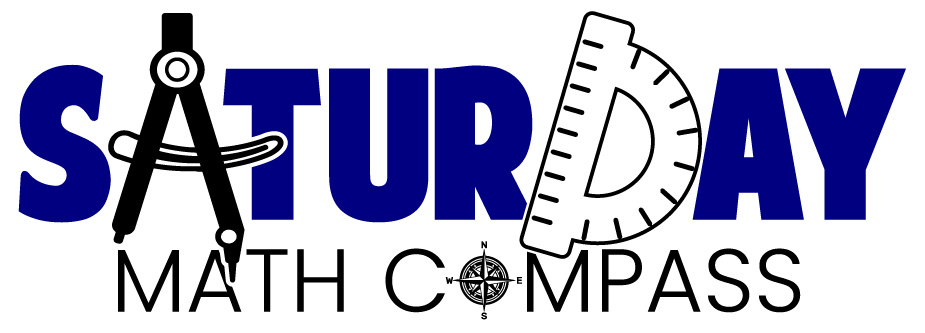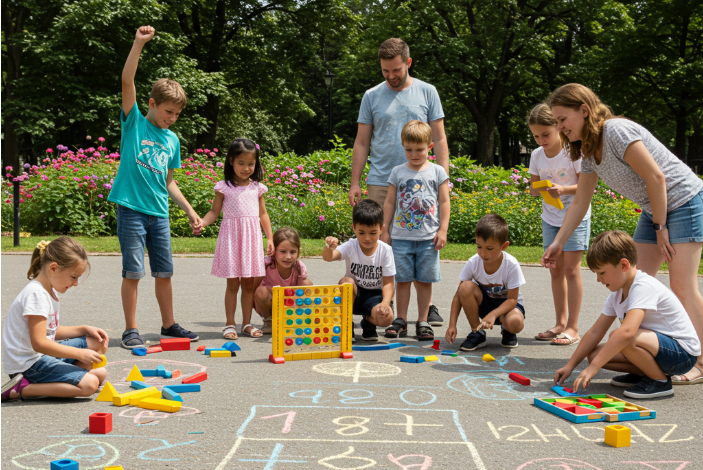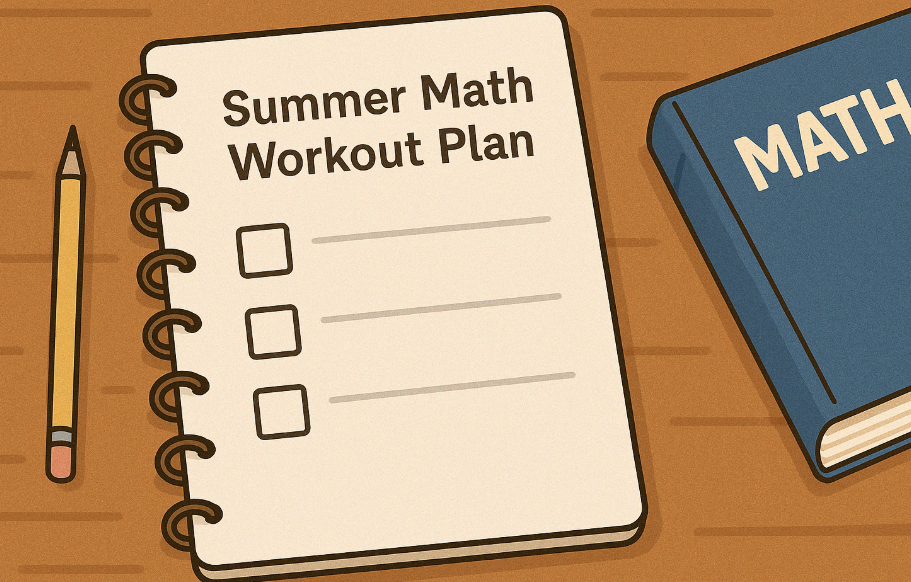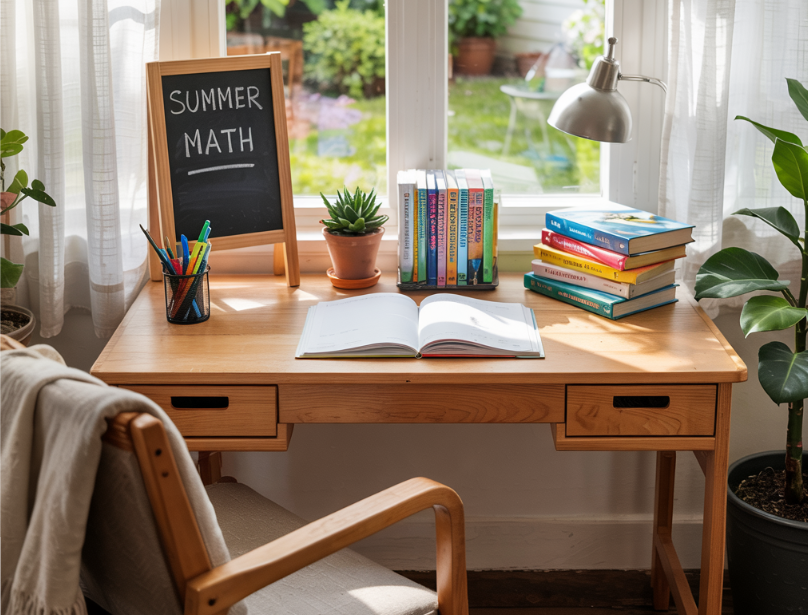Unlock Your Child’s Math Potential While the Sun Shines
As the school year winds down and the promise of long, sun-drenched days stretches before us, many families eagerly anticipate a well-deserved break. While relaxation and fun are undoubtedly essential, I want to share a perspective that can transform this summer into something even more valuable: A Summer Edge for your child’s math journey.
The summer provides ample opportunities for students across the educational spectrum to work on the weakest links on their chains. But it’s often a missed opportunity for students and teachers alike.
As a teacher-learner educator, I firmly believe that learning is a continuous process, not confined within the four walls of classroom or the rigid structure of the school calendar. Math, in particular, thrives on consistent engagement and focused practice and the summer months offer a unique, less pressured environment to not only solidify existing math knowledge but also to build a more robust and intuitive understanding of math concepts.
Think about it. During the school year, the teachers have less time to think and the children have little or no time to explore the concepts they care about. New topics are introduced, tests and quizzes loom, and deeper understanding often get lost in the rush to cover the semester’s content. Summer is a golden opportunity to step back, breathe, and revisit concepts that are not fully understood throughout the school year.
Why the Summer Edge Matters for Math
Unlike reading, which children might naturally engage during summer through books and stories, mathematics rarely presents itself in such accessible ways. Most children won’t spontaneously practice fractions or explore algebraic thinking while climbing trees or riding bikes. Yet mathematics is cumulative where each concept builds upon previous understanding. This means those summer months of mathematical inactivity can have cascading effects throughout the next school year.
When your child returns to school in August/September, their teacher must operate on the assumption that certain concepts were mastered the previous year. There simply isn’t time in the curriculum to revisit everything. Children who start the year with rusty skills or fragile understanding often find themselves struggling to keep up as new material is introduced at a rapid pace. This creates a cycle of frustration and anxiety that can damage their math confidence for years to come.
The Summer Edge reverses this pattern. With just a small, consistent investment of time, your child can not only maintain their current skills but actually advance beyond grade level in areas of particular interest or importance. This creates a virtuous cycle of confidence and competence that makes future math learning significantly easier.
The Obstacle to the Summer Edge: Children’s Buy-in
Let’s address the elephant in the room: most children don’t exactly leap with joy at the suggestion of summer math practice. After nine months of structured learning, they view summer as their hard-earned freedom. As parents, we understand this feeling all too well. Who among us hasn’t looked forward to closing our own work laptops for a vacation?
The key to overcoming this resistance isn’t through bribes or battles. It lies in how we frame the experience. When we present summer math as tedious homework or remedial catch-up, we practically guarantee resistance. But when we position it as special training that gives them powers and advantages their peers won’t have, the narrative shifts dramatically.
Think about it like athletic training. Young athletes don’t resent the practice that helps them excel; they understand it’s the pathway to improvement. Similarly, musicians don’t view practice as punishment but as the means to mastery. Mathematics deserves the same respect. Present summer math as your child’s secret training ground, a place where they can develop math “superpowers” at their own pace, without the pressure of grades or keeping up with classmates.
Involve your child in setting meaningful summer math goals. Perhaps they want to become lightning-fast with multiplication facts, or maybe they’re curious about negative numbers that haven’t been introduced yet in school. When children have agency in their learning journey, resistance naturally diminishes.
Identify the Starting Point
Before the summer begins, take time to understand your child’s current mathematical landscape. You want to have insightful conversations about your child’s math experience of the passing school year. Ask questions like: “What math topics did you find most interesting this year?” “Was there anything that felt particularly challenging?” “What are you curious about in math?”
Review their most recent report card and any end-of-year assessments they brought home. If possible, connect with their teacher before summer break to get insights about specific areas to focus on. Some schools now offer online mathematics platforms that provide detailed analytics about a student’s strengths and learning gaps.
In case you don’t know, mathematical understanding transcends computational skills. Look for indicators of conceptual understanding (Do they know why procedures work?), problem-solving abilities (Can they approach unfamiliar problems?), and mathematical discourse (Can they explain their thinking?). This holistic view will help you craft a summer plan that addresses true needs rather than surface-level symptoms.
Choose a Framework. Choose a Resource
As parents, we don’t need to become math teachers ourselves, but we do need to provide structure and quality resources for our children’s summer learning. A simple framework helps ensure balanced mathematical development rather than scattered practice.
For elementary and middle school mathematics, I recommend resources that balance conceptual understanding with plenty of practice opportunities. Here are some exceptional options for students in grades 4-8:
Singapore Math Practice Workbooks offer visual models that make abstract concepts concrete. Their step-by-step approach builds deep understanding while providing ample practice problems. The Home Instructor’s Guides make them accessible even for parents who feel uncertain about mathematics themselves.
Beast Academy combines rigorous mathematics with engaging comic-book style presentation that appeals to reluctant learners. Their online platform includes both instruction and practice games that children often don’t even recognize as “math work.”
Jump Math breaks concepts into manageable chunks with carefully sequenced problems that gradually increase in difficulty. Their clear explanations make them ideal for independent work with minimal parent supervision.
Art of Problem Solving introduces children to mathematical thinking that goes beyond standard algorithms. Their approach develops the creative thinking and perseverance that distinguishes truly successful math students.
Summer Learning HeadStart by Lumos Learning provides the perfect balance of review and preview for math success. These grade-specific workbooks combine structured practice of last year’s concepts with an introduction to upcoming material, giving students both confidence and a competitive edge. What I love most about these resources is their accessibility – clear instructions, step-by-step explanations, and an abundance of practice problems that build in difficulty.
The ideal resource matches both your child’s learning style and your family’s approach to summer. Some families prefer physical workbooks that can be taken to the park or grandparents’ house, while others appreciate the immediate feedback of digital platforms. The best resource is ultimately the one your child will actually use consistently.
Create a Summer Math Workout Plan.
Just as a personal trainer would focus on key exercises rather than random activity, your summer math plan should prioritize foundational concepts that will have the greatest impact on future learning. For students entering grades 4-8, consider focusing on these game-changing areas:
Number fluency ensures automatic recall of basic facts, freeing mental energy for higher-level thinking. This includes multiplication and division facts, as well as efficient mental calculation strategies.
Fraction understanding represents perhaps the single most important conceptual area in middle-grade mathematics. Deep fraction sense lays groundwork for algebra, proportional reasoning, and countless real-world applications.
Proportional reasoning connects to everything from cooking to science to financial literacy. This includes understanding ratios, rates, percentages, and scaling.
Algebraic thinking introduces patterns, variables, and equations in accessible ways before formal algebra courses begin. Early exposure dramatically eases the transition to abstract mathematics.
Problem-solving strategies teach children to approach unfamiliar situations with confidence. These transferable skills extend beyond mathematics to all areas of learning.
Rather than trying to cover everything, choose 3-4 priority areas based on your child’s needs and interests. Structure your plan around 30-minute sessions, ideally at the same time each day. Consistency matters more than duration; regular brief practice yields far better results than occasional marathon sessions.
Click Here
to request a sample Summer Math Plan Template.
Set up a Comfortable Space
The physical environment significantly impacts learning. Create a dedicated space for summer math that feels inviting rather than institutional. This doesn’t require an elaborate setup—a corner of the kitchen table can work beautifully if it has good lighting, comfortable seating, and minimal distractions.
Stock this area with essential tools: pencils, erasers, graph paper, a ruler, and perhaps manipulatives like fraction tiles or base-ten blocks for younger students. Keep the chosen resources organized and accessible so that getting started doesn’t involve hunting for materials.
Personalize the space with touches that connect mathematics to your child’s interests. For sports enthusiasts, incorporate statistics from favorite teams. For nature lovers, introduce the mathematical patterns found in flowers, shells, or animal populations. These connections help children see mathematics as relevant to their world rather than isolated abstract symbols.
The Power of Focused Practice
The magic of the Summer Edge lies not in quantity but in quality and consistency. Thirty minutes of focused daily practice yields dramatically better results than occasional two-hour sessions. This brief daily engagement keeps mathematical thinking active without overwhelming your child or dominating summer days.
During these practice periods, encourage depth over speed. Rather than racing through worksheets, invite your child to explore multiple solution methods, explain their thinking, and connect ideas to previous learning. Quality thinking builds stronger neural pathways than rapid repetition of procedures.
Make the practice visible by tracking progress in a way that motivates your child. This might be a simple calendar where they mark completed sessions, a progress bar toward a specific skill mastery, or regular opportunities to teach newly acquired concepts to family members. The satisfaction of visible progress fuels continued engagement.
Final thoughts: the Summer Edge Advantage
When September arrives, children who have maintained the Summer Edge return to school with a notable advantage. Not only have they retained previous learning, but they’ve deepened their understanding and often previewed upcoming concepts. This preparation allows them to engage confidently with new material, participate more actively in class discussions, and experience mathematics as a field where they can succeed.
Perhaps most importantly, the Summer Edge transforms a child’s relationship with mathematics. Through consistent, low-pressure practice, they discover that mathematical growth comes through effort rather than innate talent. They learn to approach challenges with curiosity rather than anxiety. They begin to see themselves as mathematically capable.
As parents, we can’t predict every challenge our children will face, but we can equip them with tools to navigate whatever comes their way. Mathematical confidence—the deep-seated belief that they can reason through unfamiliar problems with persistence and creativity—may be one of the most valuable gifts we can offer. The summer months, with their relaxed pace and freedom from academic pressures, provide the perfect opportunity to nurture this confidence.
The Summer Edge isn’t about filling every moment with formal learning or transforming play into work. It’s about finding that sweet spot where mathematical growth happens naturally alongside all the joy and adventure of childhood summers. With thoughtful preparation and consistent engagement, you can help your child discover the satisfaction of mathematical mastery while the summer sun shines.
For more strategies on helping your child build math confidence, foster growth, and develop problem-solving skills, subscribe to Saturday Math Compass Newsletter.
Email your questions to DrSeni@saturdaymathcompass.com






